Volkswagen is about to ignite the next stage of its global SUV strategy. After recently showing the new Touareg in Europe and China, Volkswagen is now debuting a new version of the Atlas SUV at the New York International Auto Show: the Atlas Cross Sport concept. The new Atlas Cross Sport concept is a five-seat version of the midsize SUV that went on sale in the U.S. in 2017 as a seven-seater. The near-production concept car features a coupe-like profile, an even sportier stance, and a plug-in hybrid drivetrain with 355 horsepower and an anticipated 26 miles of all-electric range. A conventional mild hybrid version of the same powertrain would make 310 hp. The actual production vehicle is scheduled to be launched in the U.S. market starting in 2019, and will be built alongside the seven-passenger Atlas and the Passat sedan in Chattanooga, Tennessee.
New York Auto Show
An innovative range of SUVs is an important element in Volkswagen’s growth strategy for the U.S. market, alongside new products such as the 2019 Jetta. The latest sales figures show the importance of the new SUV models: In February, 54 percent of Volkswagen’s American customers chose a Tiguan or an Atlas. Volkswagen of America will further increase the market share of its SUV fleet with new models such as the production version of the Atlas Cross Sport concept and the all-electric I.D. CROZZ that has been announced for 2020.
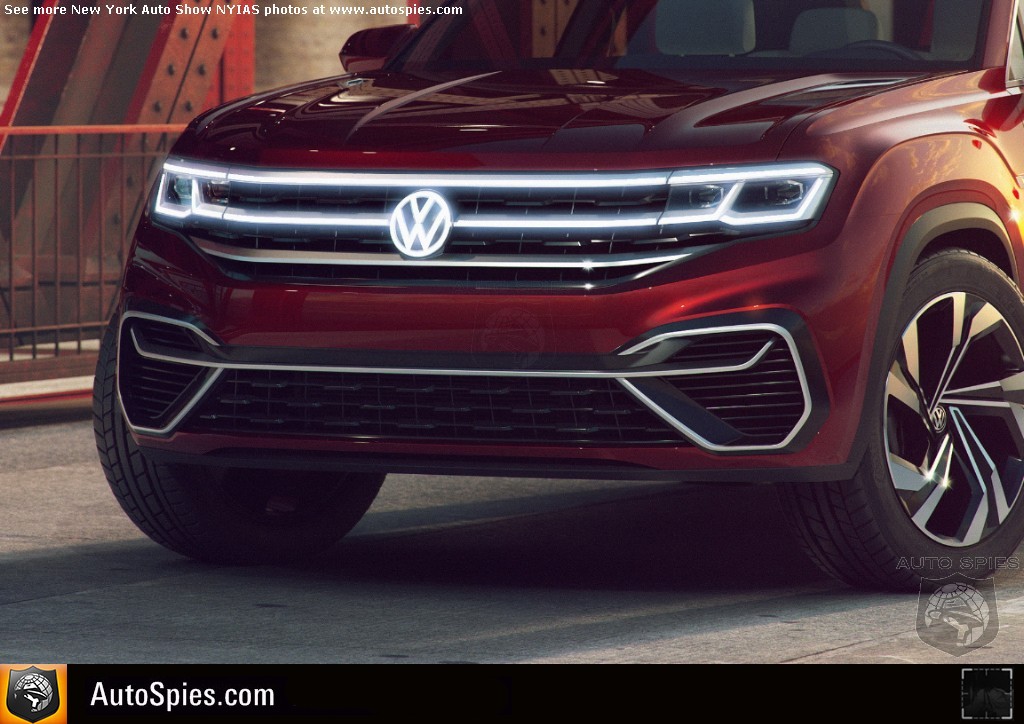
Design
The concept vehicle is 190.8 inches long, 68.3 inches tall and 79.9 inches wide. The powerful exterior is marked at the front by a two-bar grille instead of the three bars on the seven-passenger Atlas. In both vehicles, the LED headlights and LED Daytime Running Lights (DRLs) are an integral part of the radiator grille and a key feature of the new midsize Volkswagen SUV family. Unlike the Atlas seven-seater, the grille crossbars are also illuminated in white and operate as LED DRLs.
The profile of the Atlas Cross Sport concept combines powerful proportions with sleekly raked C-pillars, as well as short front and rear overhangs. The roof spoiler, which has black side fins, is another distinctive element. The way that the character line transitions directly into the wide, flared wheelarches serves to emphasize its power and presence.
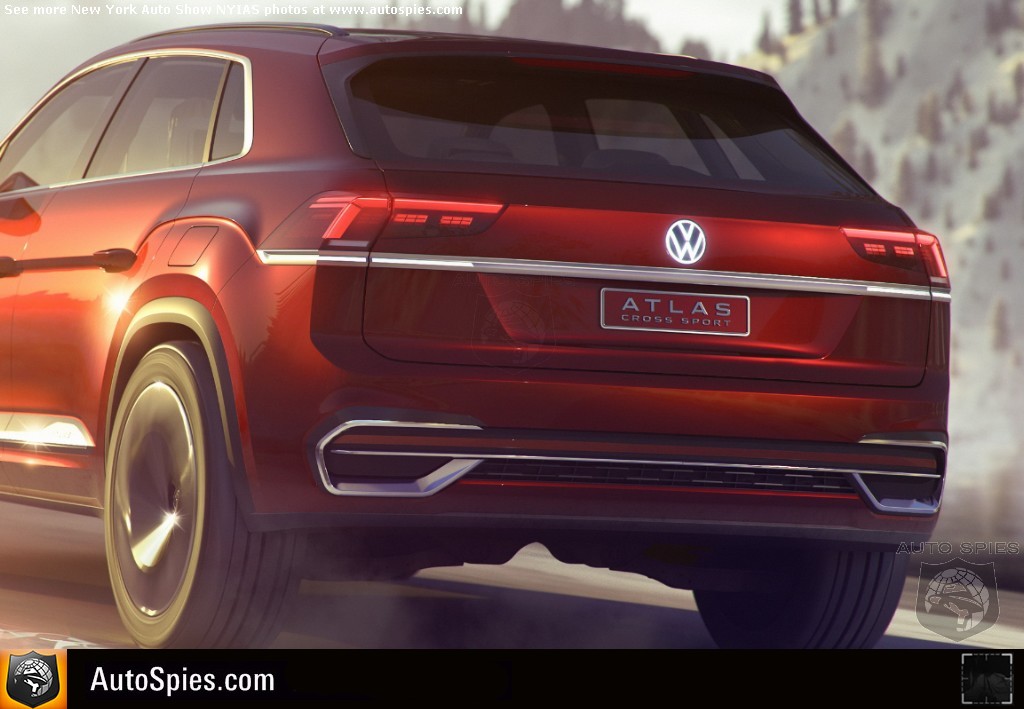
The rear wheelarch on the driver's side features the ‘filler cap’ for connecting the charging plug for the lithium-ion battery; the one on the other side houses an actual fuel filler neck. The 22-inch aluminum-alloy wheels, which are shod with 285/40 tires, have high-gloss polished spokes for a truly premium look.
After flowing through the wheelarches, the character line transitions into an aluminum accent at the rear of the vehicle. LED taillights are positioned above this trim line. The horizontal design motif continues with an aluminum trim piece that extends laterally across the bumper, and into exaggerated tailpipe surrounds, which mirror the taillights above. The vehicle features a low sill height of 33.3 inches for ease of loading.
Interior
Inside the Atlas Sport Cross concept, the horizontal design remains dominant, emphasized by the instrument panel and infotainment screens. The infotainment system touchscreen is located high on the instrument panel and is seamlessly integrated. The driver and front passenger can manage all infotainment functions and the basic vehicle configuration via a 10.1-inch touchscreen with proximity sensors and gesture control. The layout of the graphics changes depending on which driving profile is selected— ‘Snow,’ ‘Sport,’ ‘On-road’ or ‘Off-road’.
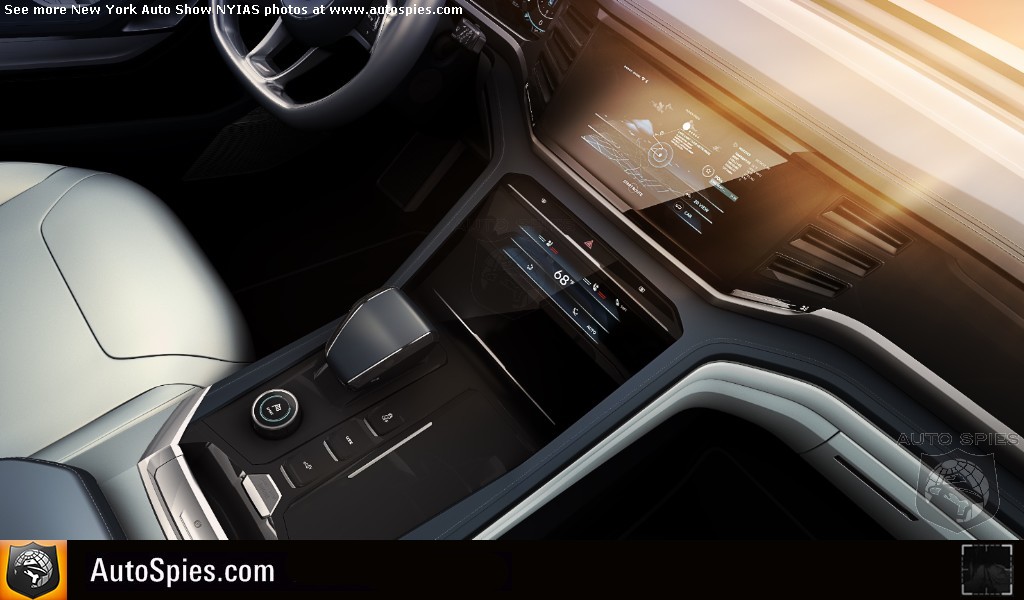
Navigation data can be displayed in a two-dimensional or three-dimensional form. In the 3D view, the user has the option of configuring an individual display layout, which can be done on three or more levels that hover above one another in virtual space. Each level shows the map and position of the vehicle, but with different information. On the top level, the driver can configure the Points-of-Interest (POI); the middle level has geographic information such as the current elevation above sea level; the lower ‘Car’ level shows the route and the position of the vehicle.
The 12.3-inch Volkswagen Digital Cockpit has a resolution of 1,440 x 540 pixels, enabling sophisticated and interactive graphics. These graphics change according to the selected drive mode—for instance, if you are in ‘E-Mode,’ driving on electric power. The Digital Cockpit display can be reconfigured to show information on driving, navigation and assistance functions as necessary. The driver can also transfer data shown on the touchscreen, such as telephone contact images or CD covers, to the display.
The area below the infotainment system and the Digital Cockpit is upgraded by a horizontal trim strip made of brushed aluminum, which runs across the whole width of the interior. As with the infotainment system, a touchscreen is used for climate control settings, including those for the seat heating and ventilation.
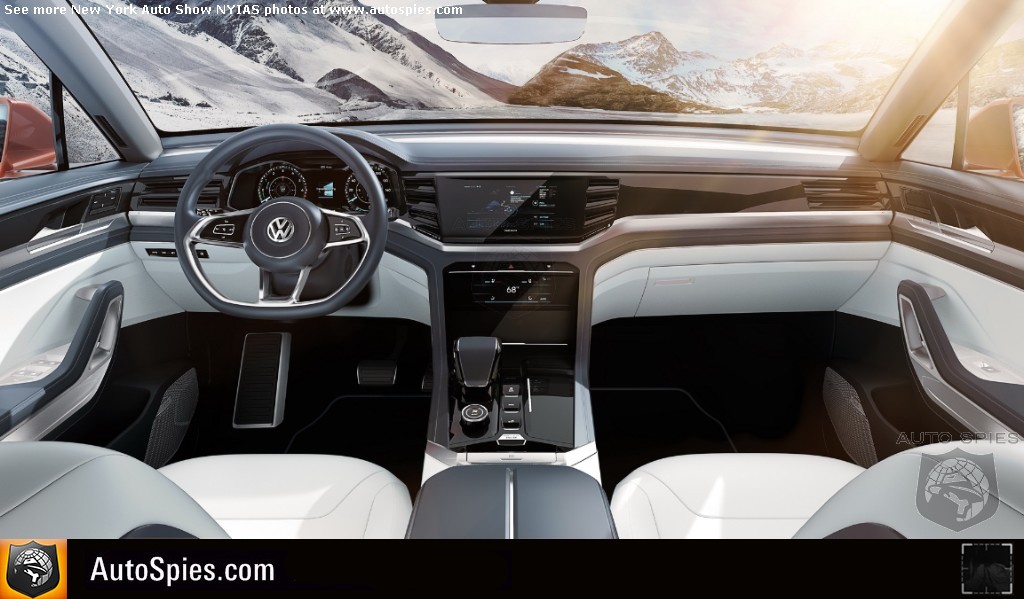
On the left-hand side of the center console, the selector lever for the 6-speed DSG® automatic transmission has shift-by-wire functionality. It is always in a central position. Short clicks activate the ‘R,’ ‘N’ and ‘D’ settings. A separate button integrated in the selector lever is used to switch to the ‘P’ position.
Behind the DSG shift lever is the 4MOTION® Active Control that offers ‘On-road,’ ‘Off-road,’ ‘Sport’ and ‘Snow’ driving profiles. This selector has a high-tech design with an HD display and transparent ‘light pipe’ elements that conduct LED light. Between the DSG selector lever, driving profile selector and cupholders are the black hard keys for ‘ESC,’ ‘E-Mode’ and ‘GTE-Mode’ and the aluminum ‘Start/stop engine’ button. Two cupholders are positioned to the right of the DSG selector lever where they are easily accessible.
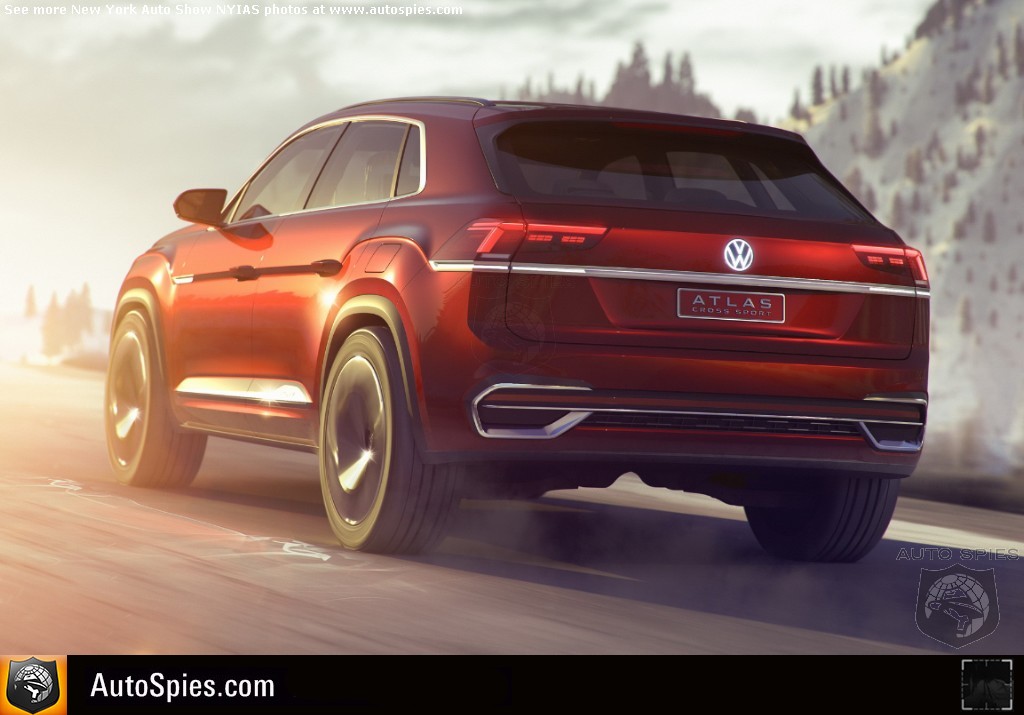
There is one more functional console in the front of the cabin. In the roofline area, there are touch buttons that control the panoramic glass sunroof, a matching sunshade and interior light functions.
Powertrain
Since the Atlas is based on Volkswagen's modular transverse matrix (MQB), it can be built with all manner of drive systems, including a plug-in hybrid drivetrain. The Atlas Cross Sport concept uses the same 3.6-liter V6 FSI® engine as the Atlas, making 276 horsepower and 266 pound-feet of torque. In the Cross Sport concept, this engine is boosted by two electric motors. The front motor develops 54 hp and 162 lb-ft, and the rear motor makes 114 hp and 199 lb-ft.
Energy for the motors is supplied by a compact 18.0 kWh lithium-ion battery housed in the center tunnel. The drive system's total power amounts to 355 hp, which potentially enables the Cross Sport concept to accelerate from 0 to 60 mph in just 5.4 seconds. The top speed is 130 mph.
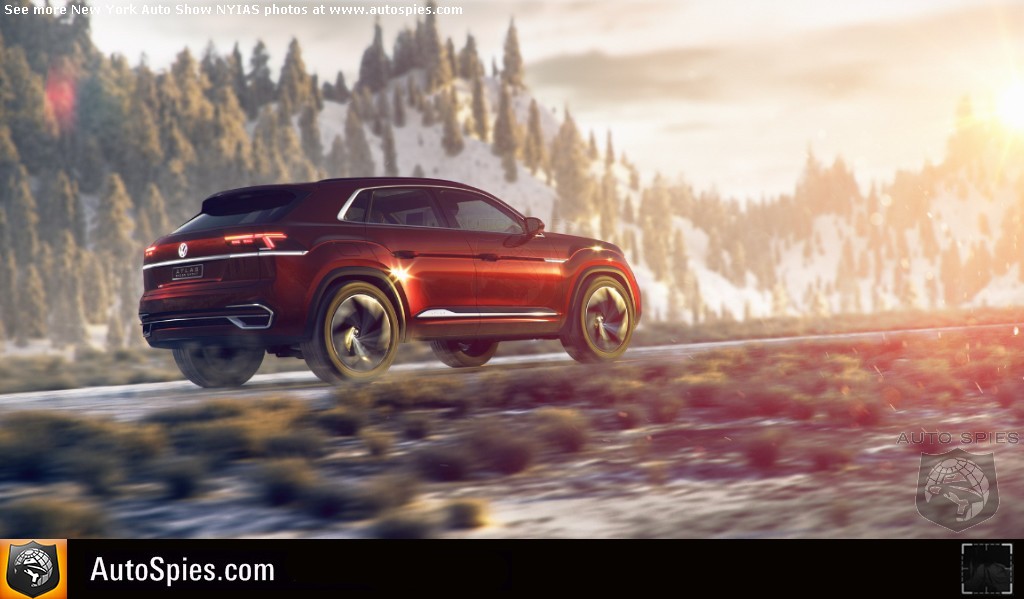
The Atlas Cross Sport concept could also feature a mild hybrid powertrain. Using the same V6 engine and electric motors, but with a smaller 2.0 kWh battery, the mild hybrid version would produce 310 horsepower and give 0 to 60 mph acceleration in 6.5 seconds. The top speed would remain at 130 mph.
The Atlas Cross Sport PHEV concept can be driven in any of five modes: ‘E-Mode’, ‘Hybrid’, ‘GTE,’ ‘Off-road’ or ‘Battery Hold / Battery Charge’.
- ‘E-Mode’. The Atlas Cross Sport concept always starts out in the all-electric ‘E-Mode’ provided that the battery is sufficiently charged. The all-electric driving range is up to 26 miles. In E-Mode, the vehicle’s drive power is exclusively supplied by the 114 hp electric motor at the rear axle. In all-electric mode, the gasoline engine is decoupled from the drivetrain by disengaging the clutch, and it is shut off. As soon as the V6 needs to be engaged again, it is coupled to the drivetrain in a nearly imperceptible process. A power electronics unit manages the flow of high-voltage energy from and to the battery and to the electric motors. The 12-volt vehicle electrical system is supplied by a DC/DC converter. The battery is charged via external power sources or while driving.
- ‘Hybrid’. As soon as the battery’s voltage drops below a certain charge, the Atlas Cross Sport concept switches to ‘Hybrid’ mode. The hybrid version would always start in this mode. Depending on the driving situation, it automatically engages the V6 and/or the rear electric motor. If the driver removes his or her foot from the accelerator or brakes when the battery is not sufficiently charged, both electric motors operate as generators and feed energy recovered from braking into the lithium-ion battery. When the gasoline engine alone is powering the vehicle, the concept car is exclusively a front-wheel drive vehicle. However, the rear axle is rapidly engaged again as soon as the driving situation demands it.
- ‘GTE’. The driver uses the GTE button to switch to GTE mode, which makes the throttle map, gearshifts and steering even sportier. In addition, the V6 and the electric motors work together in ‘GTE Mode’ during ‘boosting’ to access the full system output and the maximum system torque of 494 pound-feet.
- ‘Off-road’. As soon as the driver activates the ‘Off-road’ mode, the Atlas Cross Sport concept becomes an all-wheel drive vehicle. In this case, and when the battery's state of charge is low, the front electric motor—now supplied with energy by the V6 gasoline engine—is employed exclusively as a generator and is the energy source for the electric motor on the rear axle. Because the energy for driving the rear wheels is transferred ‘by wire’ and not mechanically, it is referred to as an ‘electric propshaft’. Due to the fact that, in Off-road mode, the gasoline engine drives the rear electric motor via electrical energy from the front electric motor, this all-wheel drive configuration is even available if the battery has a low state of charge. This gives the plug-in hybrid SUV very impressive off-road ability.
- ‘Battery Hold / Battery Charge’. The dual mode ‘Battery Hold’ (energy content of the battery stays constant) and ‘Battery Charge’ (battery is charged while driving) is activated from a menu in the infotainment system. It might be used, for example, to intentionally prepare for driving in the all-electric mode (‘E-Mode’), which could be required in a city of the future.
In addition to all the above modes, the 4MOTION Active Control offers seven different driving profiles in the Atlas Cross Sport concept: ‘On-road’ (‘Comfort’ and ‘Eco’ modes), ‘Off-road’ (‘Rocks,’ ‘Sludge & Sand’ and ‘Gravel’ modes), ‘Sport’ and ‘Snow’.
New York Auto Show
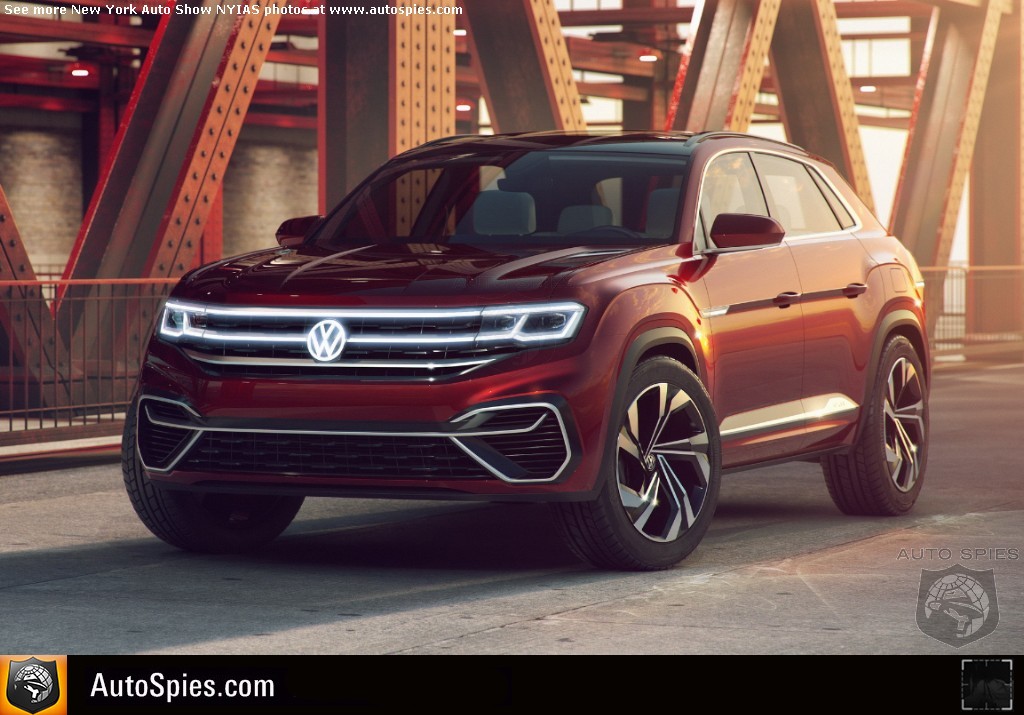
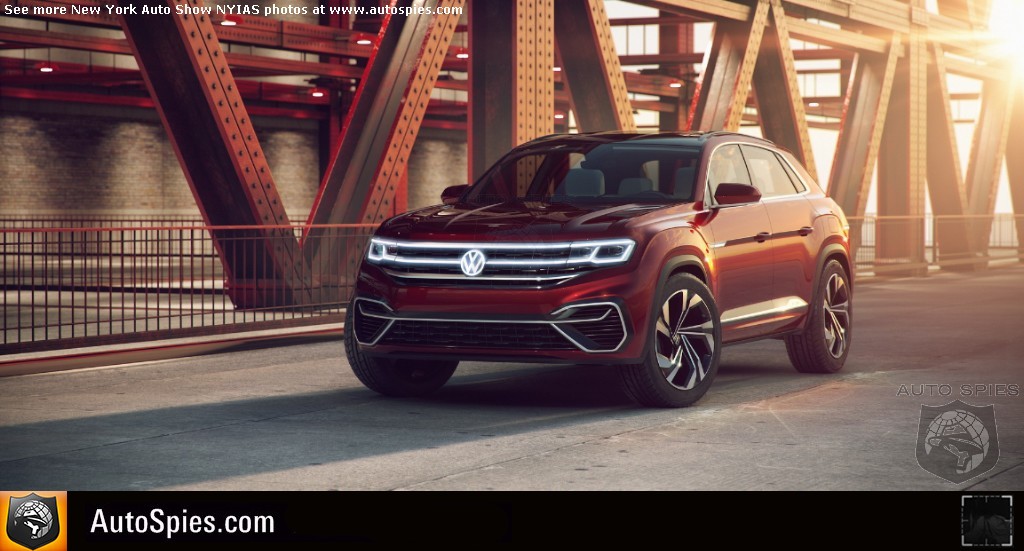
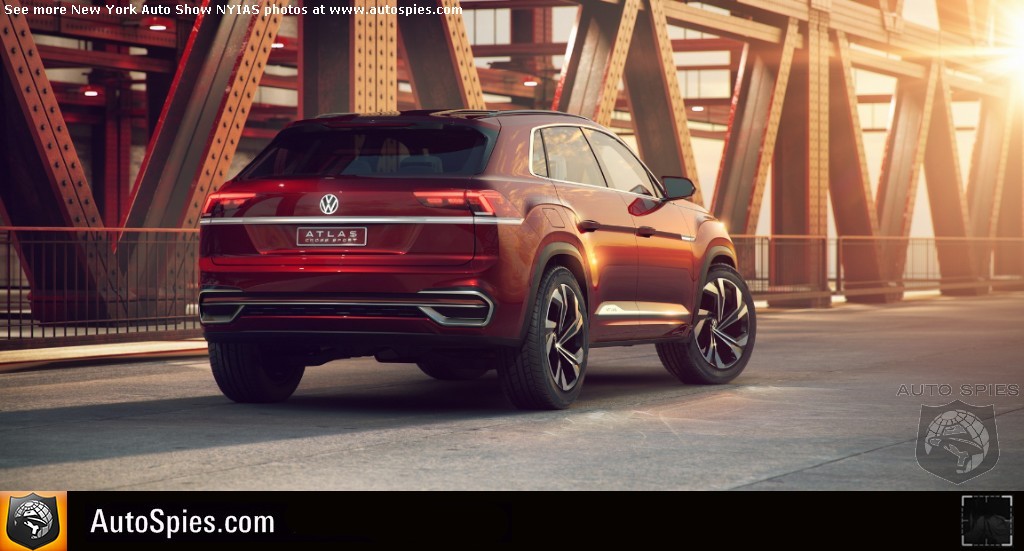
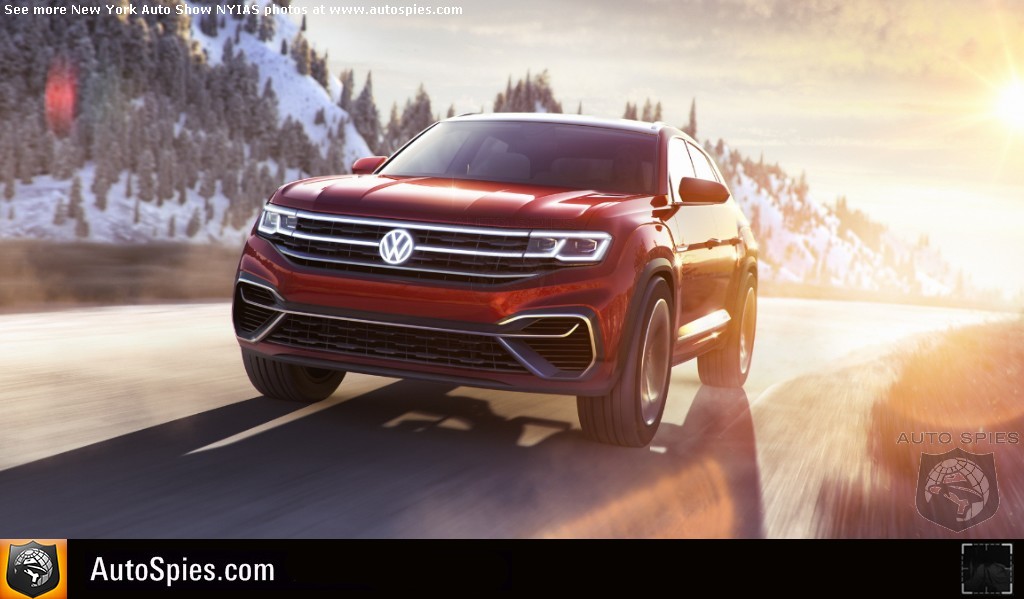

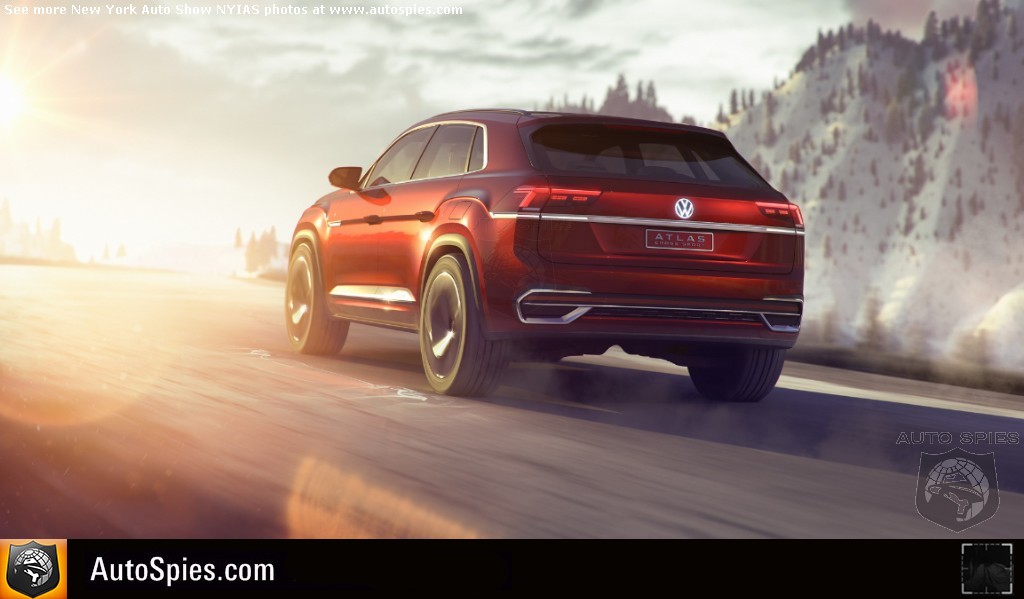
New York Auto Show